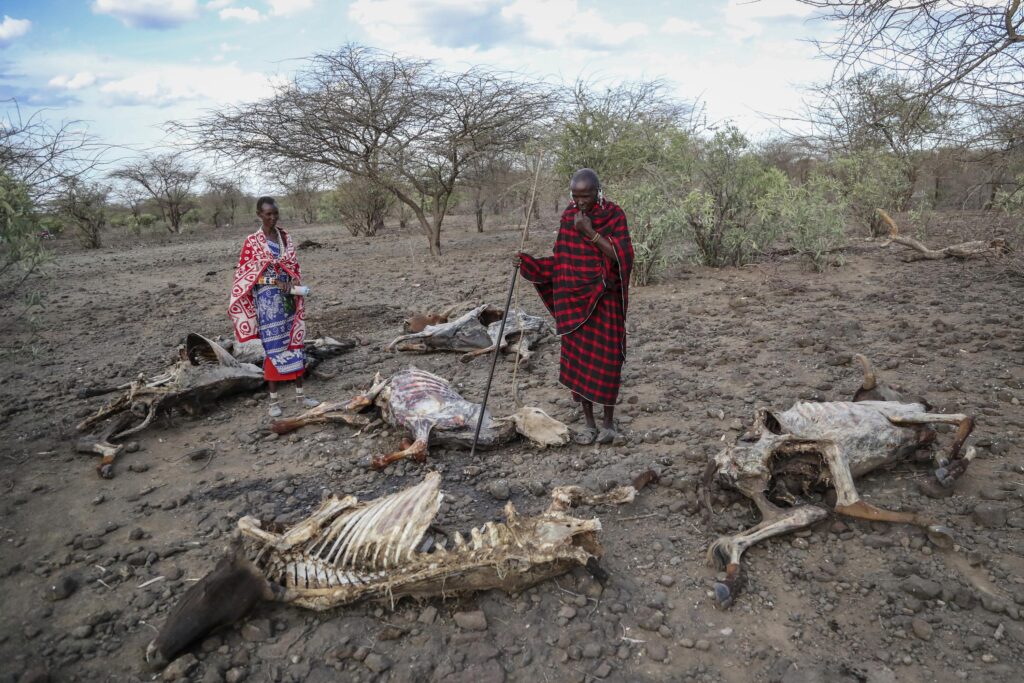
In 2011, the Horn of Africa endured one of its most devastating droughts in decades, triggering a cascade of humanitarian emergencies that reverberated across the entire region. A convergence of factors, including prolonged dry spells and erratic rainfall patterns, culminated in a dire shortage of food, pushing millions to the precipice of starvation.
Causes of the Drought
The 2011 drought in the Horn of Africa unfolded as a complex tapestry woven from various interconnected factors, each adding to the severity of the crisis. Climate change played a crucial role, intensifying its impact on the region. The warming of the Indian Ocean, combined with the occurrence of the La Niña phenomenon, disrupted the usual weather patterns, leading to an extended period of below-average rainfall.
This shift in weather dynamics acted as a significant precursor to the unfolding disaster, paving the way for widespread crop failures and acute water shortages.
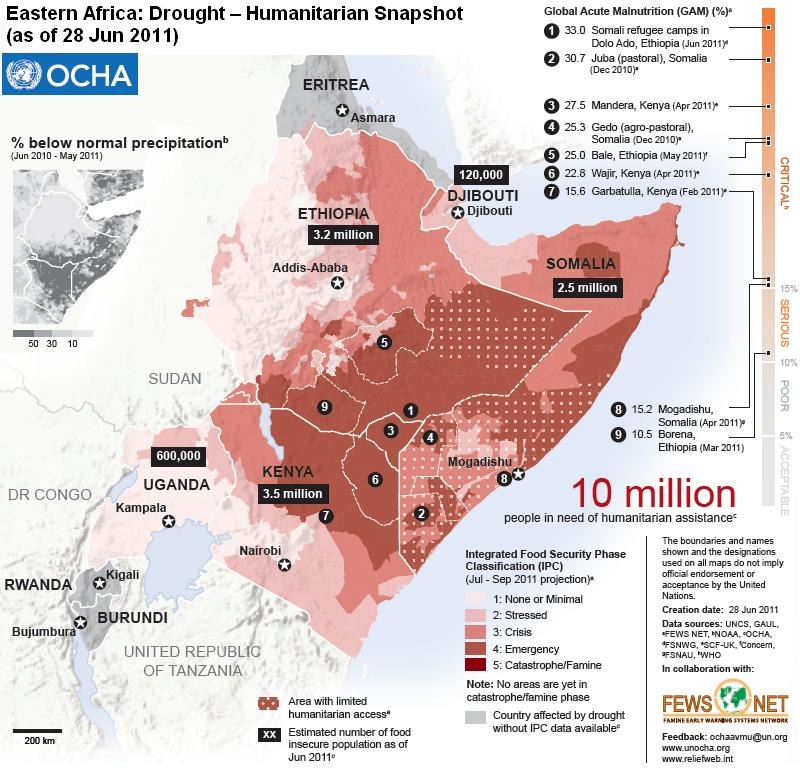
Deforestation, fueled by growing population pressures and unsustainable land-use practices, stripped large areas of natural vegetation across the region. Concurrently, soil degradation and overgrazing chipped away at the land’s ability to bounce back, leaving it dry and barren in the face of the relentless drought. These human-induced impacts not only magnified the severity of the drought but also undermined the region’s long-term ability to recover.
Weak governance structures, plagued by corruption and inefficiency, failed to adequately protect vulnerable populations. Inadequate infrastructure, characterized by crumbling water supply systems and insufficient emergency response mechanisms, worsened the toll of the crisis. Additionally, ongoing conflicts and geopolitical tensions hindered relief efforts, delaying aid delivery and exacerbating the suffering of affected communities.
Impacts on Humanitarian Crisis
The effects of the 2011 drought spread throughout the Horn of Africa, plunging communities into an unprecedented humanitarian crisis characterized by extreme suffering. The toll on food security was devastating, as the collapse of agricultural systems left millions grappling with acute malnutrition and starvation.
Livestock, essential for both sustenance and livelihoods, perished en masse under the harsh conditions, exacerbating the food crisis and undermining the economic stability of communities.
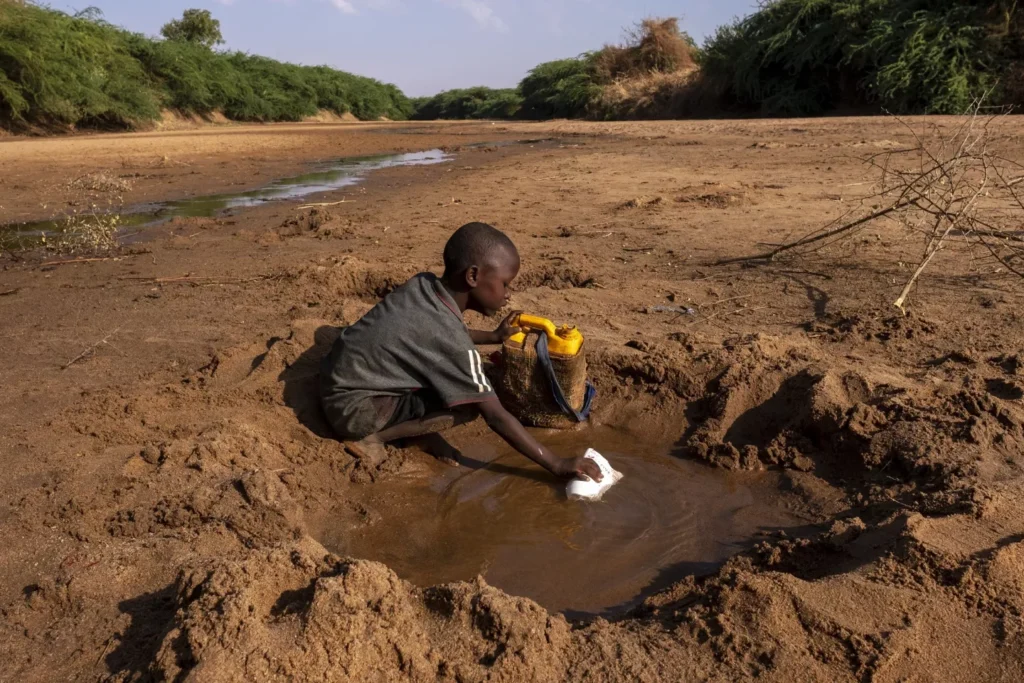
Alongside the alarming food shortages, the scarcity of clean water and adequate sanitation facilities emerged as pressing concerns, heightening the risk of waterborne diseases.
Outbreaks of cholera, diarrhea, and other illnesses surged, straining already overburdened healthcare systems to their limits. The most vulnerable members of society, including children, pregnant women, and the elderly, bore the brunt of the suffering, with mortality rates soaring in refugee camps and drought-stricken regions as resources dwindled and essential services faltered.
Moreover, the social and economic fabric of affected communities unraveled in the drought’s wake as longstanding coping mechanisms buckled under the weight of prolonged hardship.
Displacement became increasingly common as families sought refuge in overcrowded camps or embarked on perilous journeys in search of sustenance and shelter. The psychological toll of the crisis was profound, as individuals grappled with the trauma of loss, displacement, and an uncertain future.
However, amidst the scenes of devastation, stories of resilience, solidarity, and compassion emerged, as communities rallied together to support one another in the face of adversity.
Humanitarian organizations and aid agencies mobilized resources and expertise to provide life-saving assistance, delivering food, water, medical supplies, and other essential aid to those in need. The 2011 drought serves as a stark reminder of the urgent need for coordinated action to address the underlying vulnerabilities that render communities susceptible to such crises and to build resilience against future challenges.
Response Efforts and Challenges
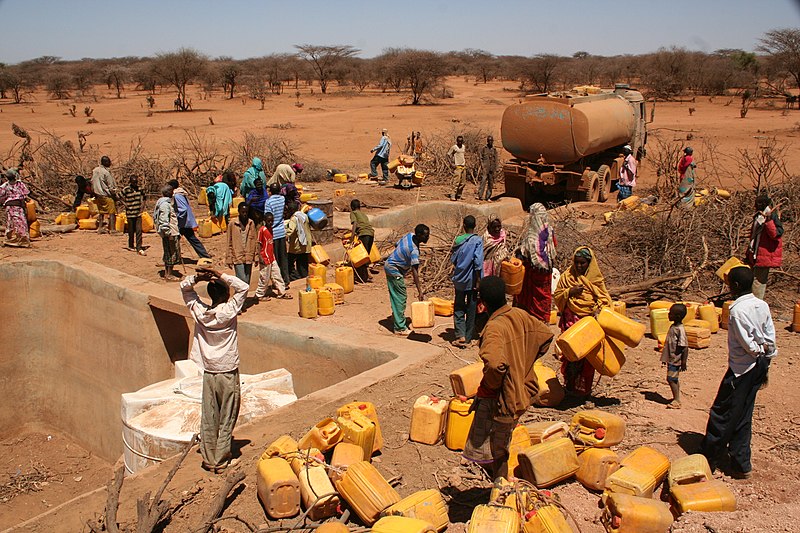
Humanitarian organizations, governmental agencies, and non-governmental organizations (NGOs) rallied together to provide critical assistance in the form of food aid, medical supplies, and clean water provision. This influx of support was vital in addressing immediate needs and preventing further escalation of the crisis.
However, despite the concerted efforts of the international community, the response to the drought encountered a myriad of challenges that hindered its effectiveness.
Logistical constraints posed significant hurdles, with limited infrastructure and access routes impeding the timely delivery of aid to remote and hard-to-reach areas. Moreover, security threats, including armed conflict and instability in certain regions, further complicated relief efforts, endangering the safety of aid workers and hindering their ability to reach those in need.
Furthermore, funding shortages emerged as a critical bottleneck, constraining the scale and scope of humanitarian interventions. The enormity of the crisis strained existing resources, leaving many aid agencies struggling to meet the escalating needs of affected populations.
This shortfall in funding not only jeopardized the delivery of essential services but also underscored the broader challenge of sustaining long-term support in protracted humanitarian emergencies.
Amidst these logistical, security, and financial challenges, coordination among various stakeholders emerged as a persistent issue. Fragmented coordination efforts often resulted in duplication of assistance and gaps in coverage, undermining the efficiency and effectiveness of the overall response. In some cases, competing priorities and divergent agendas among humanitarian actors further complicate coordination efforts, exacerbating the challenges faced on the ground.
Additionally, while the immediate response initiatives gave those who were suffering from the drought crucial relief, they also highlighted the limitations of short-term emergency responses in addressing the underlying drivers of protracted crises like droughts. Sustainable solutions, grounded in long-term development strategies and resilience-building initiatives, are essential for addressing the root causes of vulnerability and mitigating the impacts of future disasters.
Lessons Learned and Future Preparedness
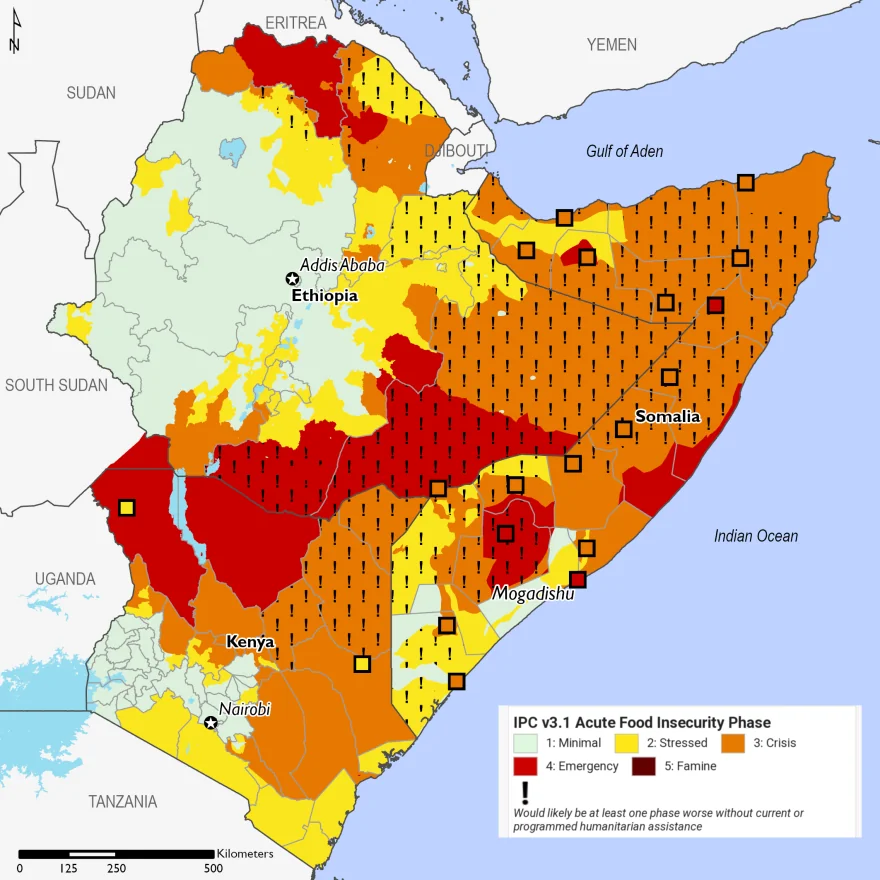
The 2011 drought in the Horn of Africa served as a stark wake-up call, highlighting the critical imperative for bolstered preparedness and resilience-building measures to confront the looming specter of future droughts.
It underscored the pressing need for proactive interventions aimed at mitigating the devastating impact of such natural disasters on vulnerable communities.
Investments in early warning systems emerge as a paramount priority, enabling communities to anticipate and prepare for impending drought conditions. These systems provide crucial lead time for implementing timely response measures, such as stockpiling food and water supplies and initiating emergency relief efforts.
Moreover, fostering climate-resilient agricultural practices and deploying innovative water harvesting techniques can equip communities with the tools and knowledge needed to navigate through periods of prolonged drought while safeguarding their livelihoods and food security.
Sustainable land management practices represent another cornerstone in the arsenal of resilience-building strategies. Initiatives such as reforestation and soil conservation not only contribute to ecosystem restoration but also bolster the land’s capacity to withstand the ravages of drought.
By preserving and enhancing natural habitats, communities can mitigate the adverse effects of water scarcity and environmental degradation, fostering greater resilience in the face of climate-induced challenges.
Diversifying livelihoods and fortifying social safety nets stand out as pivotal pillars in reducing communities’ vulnerability to the shocks of drought.
By fostering economic diversification and strengthening social support mechanisms, vulnerable populations can better weather the storm of drought-induced food insecurity and economic instability. Moreover, empowering local communities to take ownership of their resilience-building efforts fosters a sense of agency and self-reliance, laying the groundwork for sustainable development even in the most adverse conditions.
Conclusion
The 2011 Horn of Africa drought serves as a stark reminder of the catastrophic consequences of environmental degradation, climate change, and socio-political instability on vulnerable populations. While emergency response efforts are essential for saving lives in the immediate aftermath of crises, addressing the underlying drivers of droughts and building resilience at the community level are paramount for preventing future humanitarian catastrophes.
By learning from past experiences, investing in sustainable development initiatives, and fostering international cooperation, we can work towards a future where droughts no longer result in widespread suffering and loss of life in the Horn of Africa and beyond.
POPULAR TODAY
Ernest described the monster in chilling detail: “long and thin, almost like a monkey, three feet long, with large teeth and slate-grey fur.”
